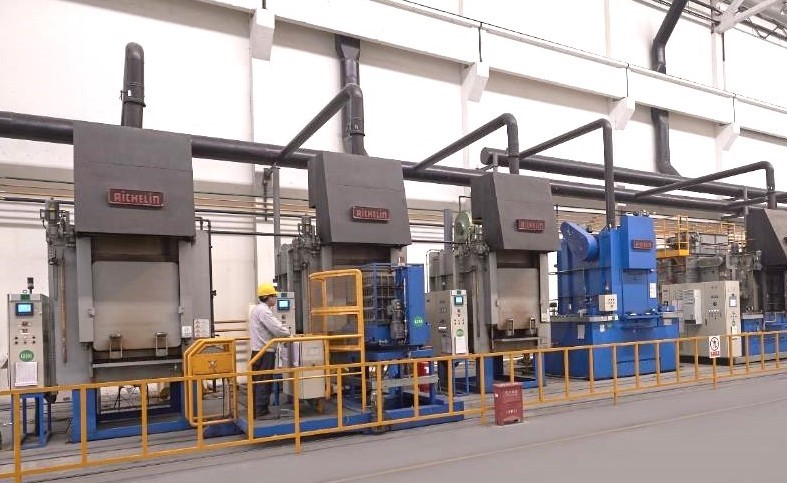Carbonitriding: What It Is and How it Hardens the Surface of Parts
Parts undergoing precision machining and investment casting processes may experience a weakening to their outer surfaces due to the machining processes. Low alloy steel and carbon steel parts may not be strong enough to handle the constant wear and tear that will be experienced once placed into operations. To provide a harder surface and to give metals more beneficial mechanical properties, such as strength, temperature resistance, ductility and surface hardness, the parts will undergo a heat treatment process.

There are many heat treatment processes available. One such process is called carbonitriding, which is considered a case hardening process. Case hardening involves adding chemicals to the part that is undergoing hot temperatures in a sealed chamber. The “case” of the part, which is the outer surface, experiences the case hardening treatment. How deep the case hardening will go into the part will be based on a variety of factors, such as hardening temperature, quench rate, hardenability of the metal, the component’s dimensions, and the carbonitriding depth.
Carbonitriding
Carbonitriding involves an austenitic hardening process used for metals to change their crystalline microstructures so that they obtain certain positive qualities. When metals are considered austenitic, they do not become hardened when experiencing heat alone. Chemicals, in this case carbon and nitrogen from added ammonia, must also be introduced in a thermochemical process. These chemicals penetrate the microstructure on the part’s surface, changing and distorting it as the casing becomes more ductile, durable, and harder.
Process
The process begins by taking the low carbon steel or low alloy steel part and heating it until reaching a temperature range of about 1500°F (850°C). Nitrogen and carbon are placed into the sealed chamber as they diffuse into the surface layers of the part. The part then becomes quenched in oil. This process hardens the metal, increasing its wear and tear resistance. The carbonitriding depths to the parts can reach to about 0.1mm to 0.75mm.
Applications
The carbonitriding process is ideal for less expensive metals that require their surface layers to be heat treated to help make the metal more durable and stronger. Low carbon and low hardenability steel parts can obtain a wide range of benefits from this process. Common parts that may go through carbonitriding include:
- pistons
- fasteners
- pins
- gears
- shafts
- gear teeth
- dies
- tools
- levers
To determine if the part should undergo carbonitriding, the metal that is used, the specifications of the part, and how the part is used in the application should be taken into consideration.
Benefits of Carbonitriding
Carbonitriding adds wear resistance properties to small parts. The process involves changing the microstructure of the surface layer instead of adding an outer coating that may become worn off due to abrasive processes from other metal parts. So the part will not have to have an outer coating constantly added to it for protection when going through daily use. This process can also be used for both simple and complex parts.
For more information about our heat treatment processes, including carbonitriding, contact Impro.